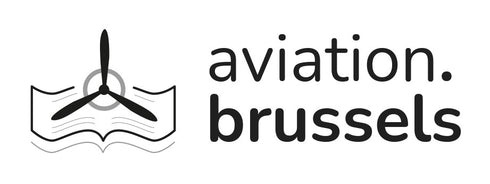LES AVIONS DE CHASSE









Prix régulier 30,00 € TTC 6%
Caractéristiques
| Finitions | Cartonné ( reliure à dos carré ) |
| Particularités | Jaquette |
| État | Occasion très bon état |
| Nb. de pages | 160 |
| Année d'édition | 1979 |
| Langue | Français |
| Format | 22 x 29 x 2 cm |
| Auteur | Bill Gunston |
| Editeur | Éditions Princesse |
Description
EXTRAIT DE L'INTRODUCTION
Choisir les vingt-et-un plus grands chasseurs est bien sûr une tâche impossible. Pour certains, la valeur d'un avion se mesure seulement sur le nombre d'exemplaires construits, sur le nombre d'avions ennemis qu'il a abattus, ou encore sur le nombre d'as célèbres qui ont déclaré que leur appareil était le meilleur. J'attacherai, pour ma part, de l'importance aux avions qui ont fait nettement progresser la technologie, à ceux qui ont réalisé des performances auparavant impossibles ou bien supérieures à celles des modèles précédents. Dans ce livre, mon choix a été légèrement influencé par les planches disponibles qu'il était souhaitable d'inclure.
À propos du choix des appareils, il faut remarquer que la plupart des amateurs d'avions de chasse aimeraient sélectionner au moins un type qui ne soit ni vraiment spécifique, ni important mais qui ait néanmoins un attrait indéfinissable. L'avion qui me vient à l'esprit est le Boeing P-26 Peashooter (la Sarbacane). On en construisit peu; ils n'avaient rien d'extraordinaire (contrairement à la plupart des appareils de cette société), ils ne furent jamais engagés dans des combats, sauf pendant une brève période au-dessus des Philippines en décembre 1941 et cela sans grand succès. Cependant, cet avion reste l'un des chasseurs les plus connus, si connu en fait, que l'on devrait abandonner le terme britannique de chasseur et revenir au vieux terme américain passionnant de poursuite qui est bien plus exact pour décrire le rôle du P-26. Pourquoi le P-26 était-il si célèbre? ce n'est que cet enchevêtre- Je n'en ai pas la moindre idée ment de fils de fer et d'aluminium aux couleurs vives était capable de produire un effet revigorant qui réveillait un enthousiasme juvénile, même parmi les plus âgés d'entre nous.
[…]
TABLE DES MATIÈRES
-
Introduction
-
Les Fokker
-
Le Nieuport XVII
-
Les Spad VII et XIII
-
Les Sopwith Camel
-
Le Boeing P-26
-
Le Polikarpov I-16
-
Le Messerschmitt Bf 109
-
Le Hawker hurricane
-
Le Supermarine Spitfire
-
Le Messerschmitt Bf 110
-
Le Lockheed P-38 Lightning
-
La série des Yakovlev 1-9
-
Le Mitsubishi A6M
-
Le Focke-Wulf Fw 190
-
Le Bristol Beaufighter
-
Le Mustang P-51 de North American
-
Le Republic P-47 Thunderbolt
-
Le Messerschmitt Me 262
-
Le Sabre F-86 de North American
-
Le Mirage Dassault III/5
-
Le Phantom F-4 de Mc Donnell Douglas
ABOUT THE AUTHOR
Bill Gunston, a veteran of the famed Royal Air Force, piloted 93 different types of aircraft during his military service. Between 1951 and 1970 he was on the staff of Flight International magazine, serving as technical editor during most of that period. Among his current positions is as editor of Jane's Aero-Engines, recognized throughout the industry as the definitive guide in its field. In 1995 he was awarded the Order of the British Empire (OBE) for services to aviation writing.
Bill Gunston OBE, FRAeS (1 March 1927 – 1 June 2013) was a British aviation and military author.[2] He flew with Britain's Royal Air Force from 1945 to 1948, and after pilot training became a flying instructor. He spent most of his adult life doing research and writing on aircraft and aviation. He was the author of over 350 books and articles. His work included many books published by Salamander Books.
Gunston joined the Royal Air Force in 1945 and went to University College, Durham on an RAF cadetship. In 1946 he moved to No 4 Flying Training School in Bulawayo, Southern Rhodesia to train as a pilot. / He later moved to No 5 Flying Training School at Thornhill were he continued training and then became an instructor flying the North American Harvard. He later flew the de Havilland Vampire F3 a single-seat jet fighter before he left the RAF in 1948.
Gunston attended the Northampton Engineering College until 1951 then he joined the staff of Flight International magazine, where, writing as "W.T.G.", he was appointed Technical Editor in April 1955. From 1969, he was part of the production team on the annual publication Jane's All the World's Aircraft, editing the 2015/16 edition. He was editor of Jane's Aero-Engines from 1995 to 2007
(Source : wikipedia.org and wob.com)









